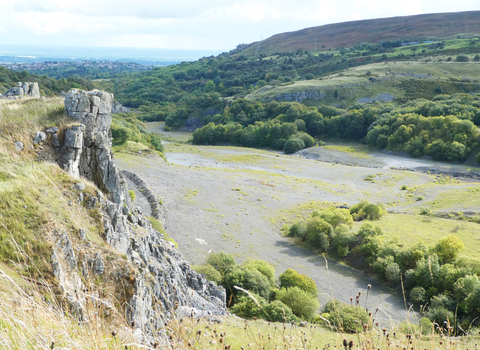Philip Precey

Hare © David Tipling 2020 Vision

Kestrel © Steve Waterhouse

Meadowsweet © Paul Lane
Old Pulford Brook Meadows Nature Reserve
Know before you go
Dogs
When to visit
Opening times
Access by permit onlyBest time to visit
Year roundAbout the reserve
In spring, autumn and winter, this collection of fields might look rather ordinary at first glance. See them in summer, however, and their importance as one of the best remaining examples of flood-meadow in Wales is obvious: a glorious rainbow of colour buzzing with insect life greets you. The tall, purple pom-poms of great burnet characterise this special meadow, with autumn hawkbit, meadow vetchling and heavy-scented meadowsweet in late summer. Fox, brown hare, Canada geese and swans are just some of the larger colourful characters that live here at different times of year.
These wet meadows are, today, a rare and threatened habitat, having declined dramatically during the last century. Floodplains were amongst the most highly valued areas of farmland, because of the regular enrichment of silt and nutrients as rivers naturally burst their banks in winter. In the quest for more profitable farming, these areas have been artificially drained and main rivers canalised and embanked – allowing the land to be farmed for longer periods during the year and converted to arable crops and permanent pasture. Such practices have resulted in the catastrophic loss of over 95% of our native grassland, with consequences for flood alleviation, water quality and soil fertility.
Cattle and cutting
Much like conventional hay meadows, hay is cut in mid-summer and followed by cattle grazing between August and October. What makes these particular floodplain habitats unique, however, is their relationship with the river: they are reliant on nutrients being brought on to them by annual flooding, usually during the winter. Timing is critical – if they are submerged for too long, the soil becomes anaerobic, changing its structure; for too little time and not enough nutrients are deposited, causing a change in the plant community. Post-flood drainage is therefore vitally important, and the Wildlife Trust manage the ditches and foot drains across the site to regulate the process.
Directions
Old Pulford Brook Meadows is located south of Poulton near Rossett, Wrexham, on the England/Wales border. The land is part of the Grosvenor Estate, owned by the seventh Duke of Westminster.



